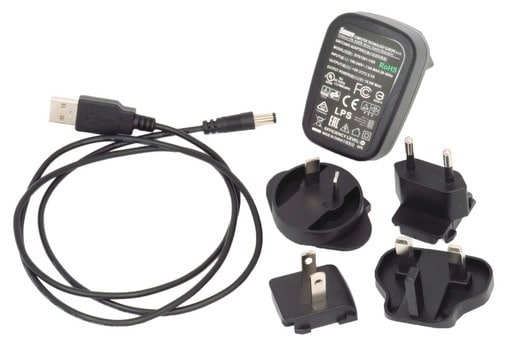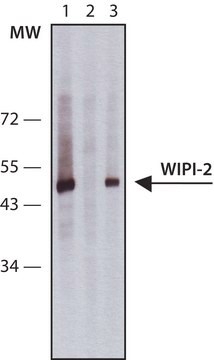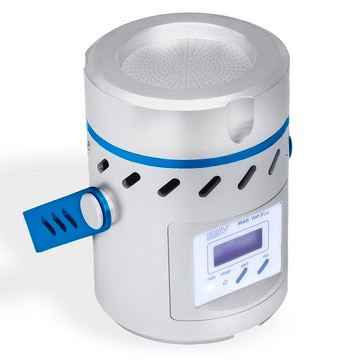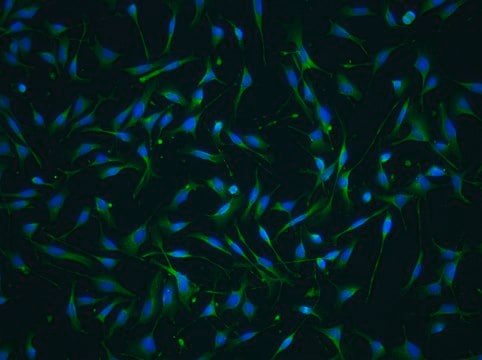HPA019852
Anti-WIPI2 antibody produced in rabbit
Prestige Antibodies® Powered by Atlas Antibodies, affinity isolated antibody, buffered aqueous glycerol solution, Ab1
同義詞:
Anti-WD repeat domain phosphoinositide-interacting protein 2, Anti-WIPI-2, Anti-WIPI49-like protein 2
登入查看組織和合約定價
全部照片(4)
About This Item
推薦產品
生物源
rabbit
共軛
unconjugated
抗體表格
affinity isolated antibody
抗體產品種類
primary antibodies
無性繁殖
polyclonal
產品線
Prestige Antibodies® Powered by Atlas Antibodies
形狀
buffered aqueous glycerol solution
物種活性
rat, mouse, human
技術
immunoblotting: 0.04-0.4 μg/mL
immunofluorescence: 0.25-2 μg/mL
immunohistochemistry: 1:50-1:200
免疫原序列
ECALMKQHRLDGSLETTNEILDSASHDCPLVTQTYGAAAGKGTYVPSSPTRLAYTDDLGAVGGACLEDEASALRLDEDSEHPPMILRTD
UniProt登錄號
運輸包裝
wet ice
儲存溫度
−20°C
目標翻譯後修改
unmodified
基因資訊
human ... WIPI2(26100)
一般說明
WIPI2 (WD repeat domain, phosphoinositide interacting 2) is a WD-repeat PtdIns(3)P (phosphatidylinositol 3-phosphate) effector protein expressed in the endoplasmic reticulum. It is expressed in different cell lines. WIPI2 exists in five isoforms (a, b, c, d, and e).
免疫原
WD repeat domain phosphoinositide-interacting protein 2 recombinant protein epitope signature tag (PrEST)
應用
All Prestige Antibodies Powered by Atlas Antibodies are developed and validated by the Human Protein Atlas (HPA) project and as a result, are supported by the most extensive characterization in the industry.
The Human Protein Atlas project can be subdivided into three efforts: Human Tissue Atlas, Cancer Atlas, and Human Cell Atlas. The antibodies that have been generated in support of the Tissue and Cancer Atlas projects have been tested by immunohistochemistry against hundreds of normal and disease tissues and through the recent efforts of the Human Cell Atlas project, many have been characterized by immunofluorescence to map the human proteome not only at the tissue level but now at the subcellular level. These images and the collection of this vast data set can be viewed on the Human Protein Atlas (HPA) site by clicking on the Image Gallery link. We also provide Prestige Antibodies® protocols and other useful information.
The Human Protein Atlas project can be subdivided into three efforts: Human Tissue Atlas, Cancer Atlas, and Human Cell Atlas. The antibodies that have been generated in support of the Tissue and Cancer Atlas projects have been tested by immunohistochemistry against hundreds of normal and disease tissues and through the recent efforts of the Human Cell Atlas project, many have been characterized by immunofluorescence to map the human proteome not only at the tissue level but now at the subcellular level. These images and the collection of this vast data set can be viewed on the Human Protein Atlas (HPA) site by clicking on the Image Gallery link. We also provide Prestige Antibodies® protocols and other useful information.
生化/生理作用
WIPI2 (WD repeat domain, phosphoinositide interacting 2) is involved in the regulation of starvation-induced autophagy. It directly interacts to the Atg12-5-16L1 complex upstream of Atg16L1. During starvation-induced autophagy, this interaction further facilitates PtdIns(3)P-dependent recruitment of Atg12-5-16L1 to the omegasome and phagophore. It also plays an essential role in the innate immune response to Salmonella Typhimurium infection by initiating several responses such as the introduction of Atg16L1, initiation of LC3 lipid conjugation, autophagosomal membrane formation, and blocking of bacterial proliferation.
特點和優勢
Prestige Antibodies® are highly characterized and extensively validated antibodies with the added benefit of all available characterization data for each target being accessible via the Human Protein Atlas portal linked just below the product name at the top of this page. The uniqueness and low cross-reactivity of the Prestige Antibodies® to other proteins are due to a thorough selection of antigen regions, affinity purification, and stringent selection. Prestige antigen controls are available for every corresponding Prestige Antibody and can be found in the linkage section.
Every Prestige Antibody is tested in the following ways:
Every Prestige Antibody is tested in the following ways:
- IHC tissue array of 44 normal human tissues and 20 of the most common cancer type tissues.
- Protein array of 364 human recombinant protein fragments.
聯結
Corresponding Antigen APREST75037
外觀
Solution in phosphate-buffered saline, pH 7.2, containing 40% glycerol and 0.02% sodium azide
法律資訊
Prestige Antibodies is a registered trademark of Merck KGaA, Darmstadt, Germany
免責聲明
Unless otherwise stated in our catalog or other company documentation accompanying the product(s), our products are intended for research use only and are not to be used for any other purpose, which includes but is not limited to, unauthorized commercial uses, in vitro diagnostic uses, ex vivo or in vivo therapeutic uses or any type of consumption or application to humans or animals.
未找到適合的產品?
試用我們的產品選擇工具.
儲存類別代碼
10 - Combustible liquids
水污染物質分類(WGK)
WGK 1
閃點(°F)
Not applicable
閃點(°C)
Not applicable
分析證明 (COA)
輸入產品批次/批號來搜索 分析證明 (COA)。在產品’s標籤上找到批次和批號,寫有 ‘Lot’或‘Batch’.。
Hannah C Dooley et al.
Molecular cell, 55(2), 238-252 (2014-06-24)
Mammalian cell homeostasis during starvation depends on initiation of autophagy by endoplasmic reticulum-localized phosphatidylinositol 3-phosphate (PtdIns(3)P) synthesis. Formation of double-membrane autophagosomes that engulf cytosolic components requires the LC3-conjugating Atg12-5-16L1 complex. The molecular mechanisms of Atg12-5-16L1 recruitment and significance of PtdIns(3)P
Maria Giovanna De Leo et al.
Autophagy, 17(11), 3644-3670 (2021-03-10)
Autophagosome formation requires PROPPIN/WIPI proteins and monophosphorylated phosphoinositides, such as phosphatidylinositol-3-phosphate (PtdIns3P) or PtdIns5P. This process occurs in association with mammalian endosomes, where the PROPPIN WIPI1 has additional, undefined roles in vesicular traffic. To explore whether these functions are interconnected
Megha Bansal et al.
The Journal of biological chemistry, 293(1), 132-147 (2017-11-15)
Autophagy is a quality-control mechanism that helps to maintain cellular homeostasis by removing damaged proteins and organelles through lysosomal degradation. During autophagy, signaling events lead to the formation of a cup-shaped structure called the phagophore that matures into the autophagosome.
我們的科學家團隊在所有研究領域都有豐富的經驗,包括生命科學、材料科學、化學合成、色譜、分析等.
聯絡技術服務








